Knowing that her father dug artwork and crafts, making furniture, playing guitar, and had a keen interest in electronics, Michael De Luca’s eldest daughter thought a book on building electric guitars would make a great gift for his 50th birthday. A great gift indeed—De Luca read the book from front to back several times that same week. “Each time I read it, I understood more and more, and I remember being totally magnetized by the prospect of actually making a guitar from scratch,” says De Luca.
Hooked and “totally possessed” by the idea of building a guitar, De Luca further researched the craft through various internet sites and many other books. “I spent at least eight to nine hours per day from the moment I was home from work until the early hours of the morning, seven days a week, over a period of about six months researching and honing my skills,” he says. In this ramp-up time, he made guitar bodies and necks from scrap wood until he felt he was ready to take on building a guitar from “proper wood.”
Today, six years later, De Luca builds both custom and standard-model guitars as a one-man operation under the moniker DELM Guitars. The company name was derived from the first letter of the first name of his two daughters, his wife, and himself. In fact, all his model names have reference to someone of great meaning in his life. “If it weren’t for my eldest daughter giving me a book on guitar making and my youngest daughter later enrolling me in the Guild of American Luthiers, I would never have discovered the immense passion and satisfaction that creating musical instruments would bring into my life,” shares the now-established builder.
When it comes to wood choices for his instruments, De Luca chooses what’s appropriate case by case, but it must be stable, fit for the purpose, properly seasoned, and free of any structural defects. He usually goes with mahogany for the bodies, but has utilized Huon pine, Tasmanian and Australian blackwoods, and New Zealand rimu with “great results,” as well some of the other traditional body woods. For fretboards, De Luca favors ebony by far over most rosewoods because of ebony’s durability, density, and the rigidity it can add to the neck.
Certainly not a defining trait of most luthiers, De Luca winds his own pickups. “When I built the first guitar for my eldest daughter, I purchased a set of humbuckers for the guitar, and after a few weeks, I couldn’t resist the temptation of taking one of them out of the guitar and dissembling it to see how it was made, and how it works,” De Luca recalls. Again coupling his curiosity with research (and his background in electrical engineering), he built his own coil-winding machine. Though the first few months of tweaks and experimenting were difficult, De Luca eventually ended up with a machine he was happy with. He then started documenting his tone tests with a guitar he says has now been re-wired hundreds of times. “I am fortunate to have had many musicians test and critique my pickups, and with their suggestions, I’ve been able to finally produce pickups and wiring configurations for a diverse range of tone options,” he says. “Tone is a subjective topic, because what sounds great to one person may not be quite the same for another.”
De Luca doesn’t have a model that he considers his signature, but notes that his chambered-body PCP model was the very first guitar he designed from scratch. It’s the guitar that gained popularity almost immediately amongst players—becoming the workhorse for the development of proceeding designs. As for what continually drives his work, De Luca conveys that it’s actually the process itself. “Boutique builders put their heart and soul in each instrument they build. For me to create a guitar that inspires people to strive for perfection in expressing their passion and soul through music is my inspiration.”
LD-56
De Luca’s standard 17.5" LD-56 archtop with a
venetian cutaway features AAA-rated European
curly maple for the back and sides, and AAA-rated
European spruce for its top. De Luca also
uses European curly maple for the set neck,
which is capped with a Madagascar ebony fretboard
and a bone nut. This 25"-scale jazz box is
outfitted with a Benedetto mini humbucker in the
neck position, and other appointments include a
handcarved ebony tailpiece and mother-of-pearl
and abalone inlay.
ED-87
The ED-87 is a 16.5" double-cutaway hollowbody
that gives a nod to Gibson’s ES-335. Mahogany
is the predominant wood on the ED-87, used for
the neck, top, body core, and full-length center
block. Lacquer finished in a gorgeously deep
black, other appointments of the ED-87 include
a Bigsby B70, Grover Super Rotomatic tuners,
and mother-of-pearl and abalone inlay work. For
electronics, this black beauty is loaded up with a
pair of De Luca’s DELM D50J humbuckers.
PCP-R
The double-cutaway, chambered-body PCP-R
has a body core and set neck constructed of
mahogany, with New Zealand rimu serving as
the topwood and Madagascar rosewood for
the fretboard. The 24.75"-scale PCP is the first
guitar design/style De Luca conceived and built
from scratch. This particular version is outfitted
with Gotoh keystone tuners, a Gotoh aluminum
stop tailpiece, and a set of De Luca’s DELM
D50B humbuckers.
NC-11A
Highly figured, flame maple finished in Atlantis-blend
tops the chambered, mahogany body of
this 24.75"-scale double-cutaway. It’s outfitted
with a solid-walnut set neck that’s crowned with
a headstock dressed in blackwood, and the
fretboard is carved from Madagascar rosewood
and has a bone nut. The gold hardware appointments
include a Bigsby B50 and Gotoh keystone
tuners, and to deliver its sound, the NC-11A is
loaded with a pair of DELM D90 single-coils that
are topped with curly maple covers.
DD-89
The DD-89 is De Luca’s take on a Les Paul-style
axe, with its body, top, and set neck all
fashioned from mahogany. Going with rosewood
for the fretboard, this classic-looking guitar’s
chrome hardware appointments include a
Schaller bridge and tailpiece, and Gotoh keystone
tuners. And for pickups, the DD-89 rocks a
pair of De Luca’s D50B humbuckers.
NC11-TD
This solidbody finished in rapid yellow would
look fast even without the pinstripes. The
25.5"-scale NC11-TD has a 3-piece, laminated-maple
set neck that’s topped with an ebony
fretboard and black-horn nut, and the mahogany,
double-cutaway body houses a trio of De Luca’s
DELM 100S single-coils. Other appointments
for this Strat-style include the Gotoh traditional
tremolo, Gotoh mini tuning machines, and pearloid
pickguard.
Pricing and Availability
DELM is currently a one-man operation
that builds approximately 10 guitars per
year; however, De Luca says demand is
increasing so he may expand his workshop.
The wait time for standard models
is approximately three months, while the
wait for a custom build falls between four
and six months. De Luca’s guitars range
from $3,300 to $8,100 (U.S.), depending
on model, custom design, materials, and
inlay work. De Luca accepts direct orders
for both custom and standard models,
but encourages players outside Australia
and New Zealand to make initial contact
through his dealer, destroyallguitars.
com. Players in Australia or New Zealand
can place orders through his dealer in
Melbourne at ghmusic.com.au.



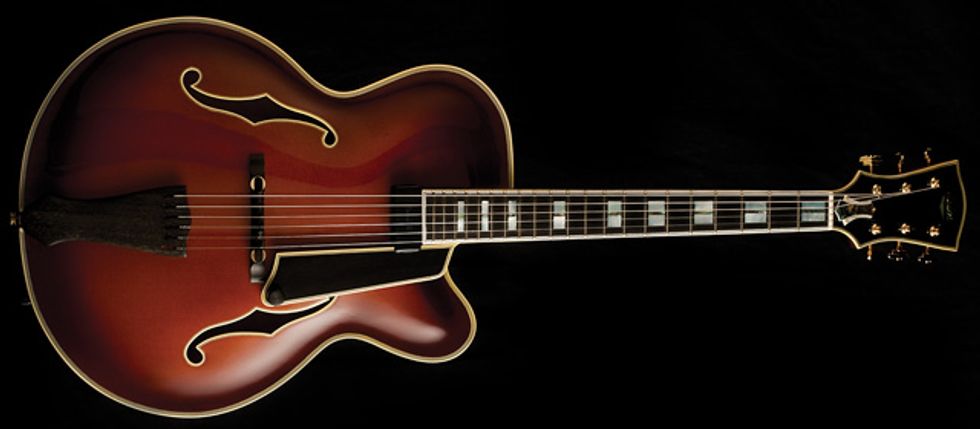
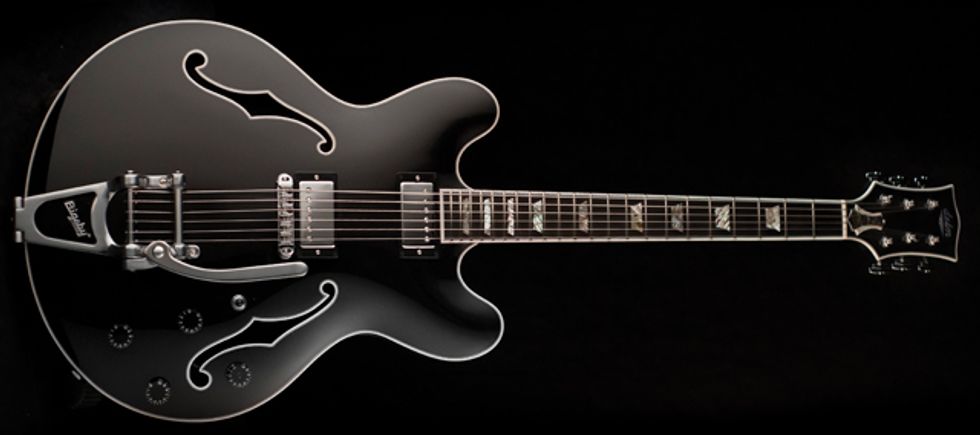
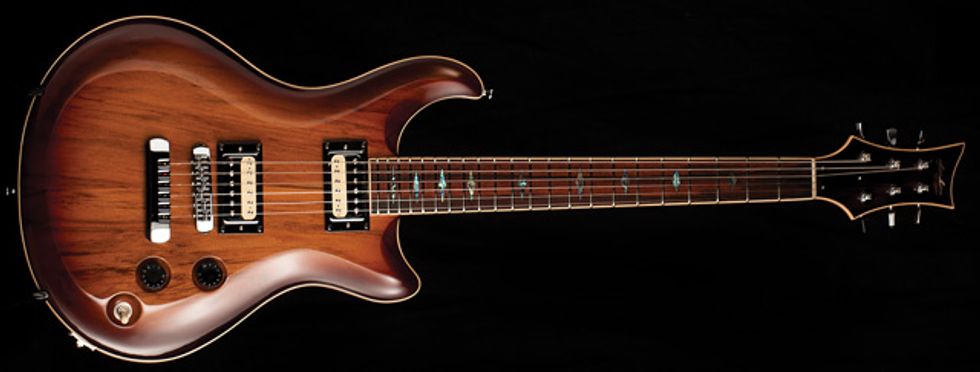
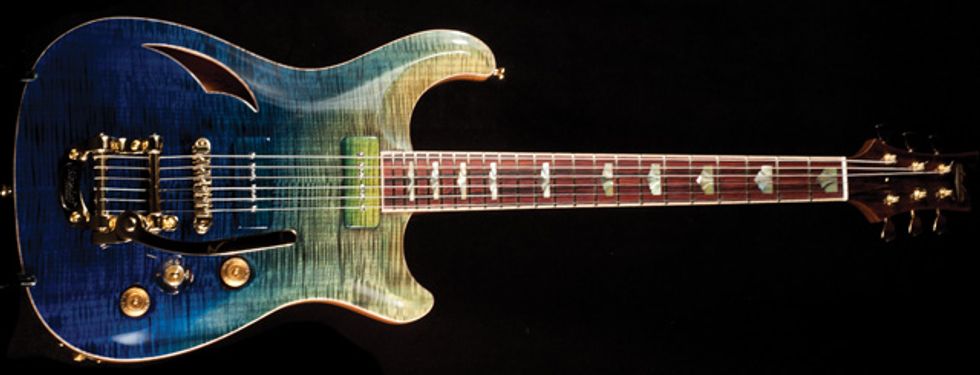
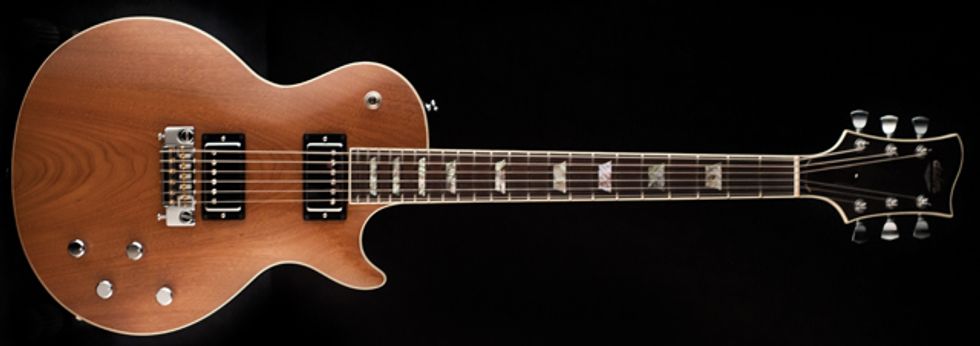
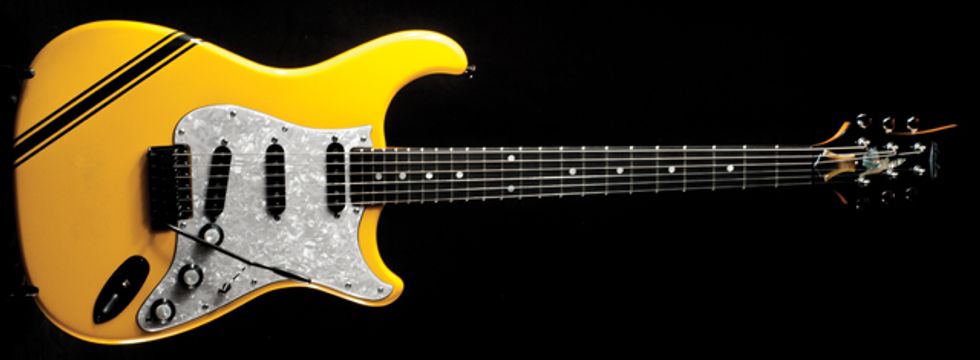




![Rig Rundown: Russian Circles’ Mike Sullivan [2025]](https://www.premierguitar.com/media-library/youtube.jpg?id=62303631&width=1245&height=700&quality=70&coordinates=0%2C0%2C0%2C0)


























